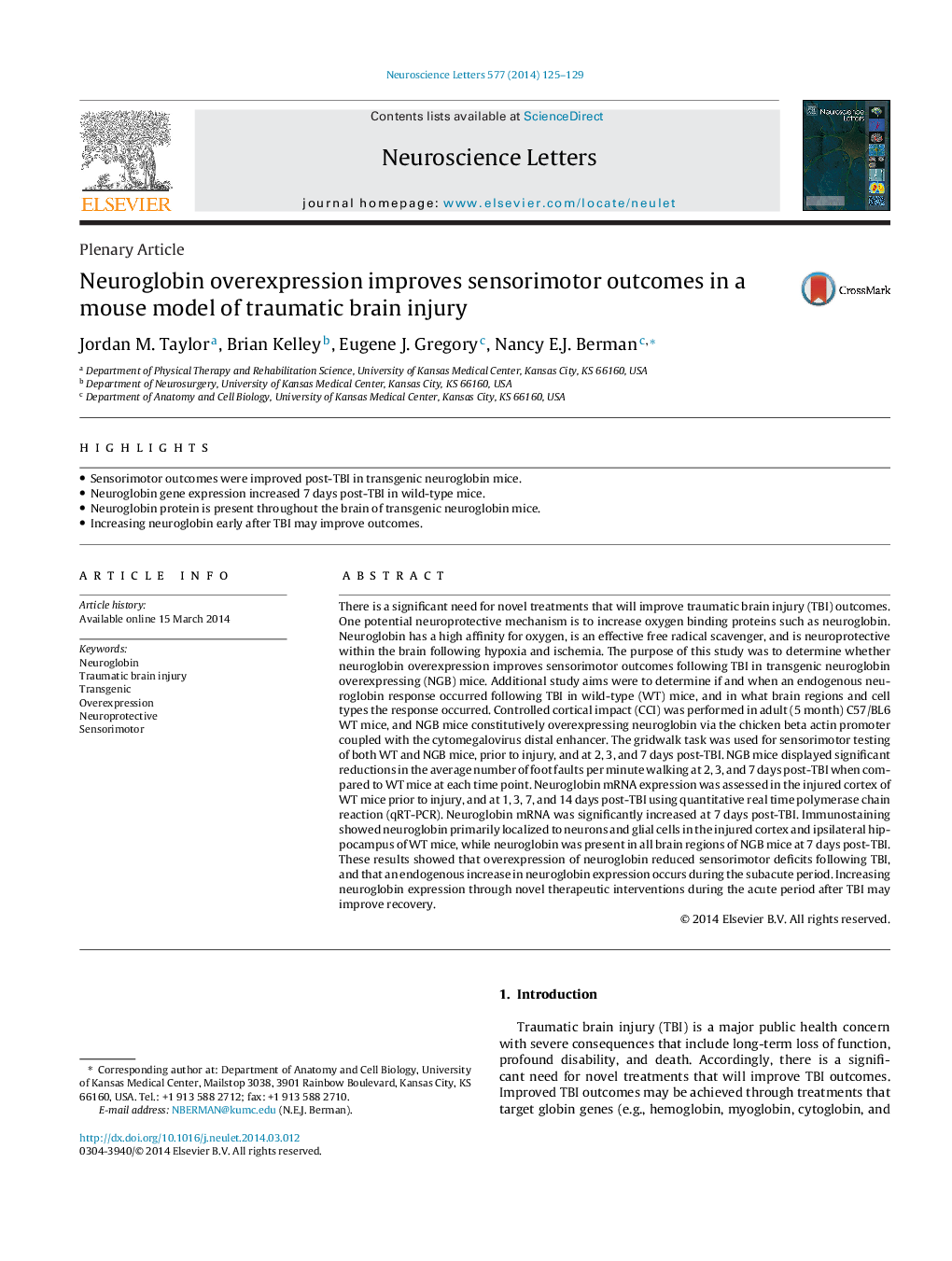| کد مقاله | کد نشریه | سال انتشار | مقاله انگلیسی | نسخه تمام متن |
|---|---|---|---|---|
| 4343688 | 1615122 | 2014 | 5 صفحه PDF | دانلود رایگان |
• Sensorimotor outcomes were improved post-TBI in transgenic neuroglobin mice.
• Neuroglobin gene expression increased 7 days post-TBI in wild-type mice.
• Neuroglobin protein is present throughout the brain of transgenic neuroglobin mice.
• Increasing neuroglobin early after TBI may improve outcomes.
There is a significant need for novel treatments that will improve traumatic brain injury (TBI) outcomes. One potential neuroprotective mechanism is to increase oxygen binding proteins such as neuroglobin. Neuroglobin has a high affinity for oxygen, is an effective free radical scavenger, and is neuroprotective within the brain following hypoxia and ischemia. The purpose of this study was to determine whether neuroglobin overexpression improves sensorimotor outcomes following TBI in transgenic neuroglobin overexpressing (NGB) mice. Additional study aims were to determine if and when an endogenous neuroglobin response occurred following TBI in wild-type (WT) mice, and in what brain regions and cell types the response occurred. Controlled cortical impact (CCI) was performed in adult (5 month) C57/BL6 WT mice, and NGB mice constitutively overexpressing neuroglobin via the chicken beta actin promoter coupled with the cytomegalovirus distal enhancer. The gridwalk task was used for sensorimotor testing of both WT and NGB mice, prior to injury, and at 2, 3, and 7 days post-TBI. NGB mice displayed significant reductions in the average number of foot faults per minute walking at 2, 3, and 7 days post-TBI when compared to WT mice at each time point. Neuroglobin mRNA expression was assessed in the injured cortex of WT mice prior to injury, and at 1, 3, 7, and 14 days post-TBI using quantitative real time polymerase chain reaction (qRT-PCR). Neuroglobin mRNA was significantly increased at 7 days post-TBI. Immunostaining showed neuroglobin primarily localized to neurons and glial cells in the injured cortex and ipsilateral hippocampus of WT mice, while neuroglobin was present in all brain regions of NGB mice at 7 days post-TBI. These results showed that overexpression of neuroglobin reduced sensorimotor deficits following TBI, and that an endogenous increase in neuroglobin expression occurs during the subacute period. Increasing neuroglobin expression through novel therapeutic interventions during the acute period after TBI may improve recovery.
Journal: Neuroscience Letters - Volume 577, 8 August 2014, Pages 125–129
